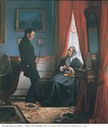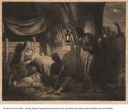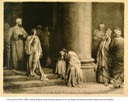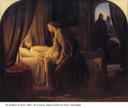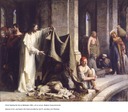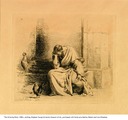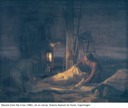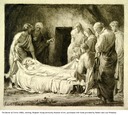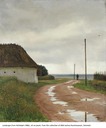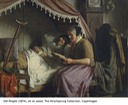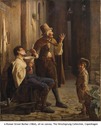Carl Bloch at BYU
The BYU Museum of Art welcomes the works of renowned artist Carl Bloch for the first time out of their native Denmark. His thoughtful depictions of the Savior have had profound influence on the lives of Christians all over the world. Bloch's portrayals of Christ possess a unique and timeless quality. They pull viewers into their story by engaging directly with the moral conflict and humanizing their characters'struggles. They affirm Christ's mission of salvation and challenge the viewer to contemplate what it means to have living faith, a principle the artist lived his life by.
Bloch was born in Denmark in 1834. He was born and raised Lutheran and practiced their faith for the duration of his life. After discovering and pursuing a passion for art in his youth, Bloch attended the prestigious Royal Danish Academy of Art in Copenhagen. Though a faithful Christian, it was not until later in his career that he began painting the Savior. Because of his acclaimed work, Bloch was later commissioned to paint twenty-three depictions of the Savior's life in the Frederiksborg Castle. Later he was commissioned by various congregations in Denmark and Sweden to create religious altarpieces, several of which will be featured in the exhibition.
While respected by many Christian faiths, Bloch's work has come to be particularly meaningful to Latter-day Saints. Though during his life Bloch was considered a master at his craft, he was largely forgotten after his death and the rise of the Impressionist movement. Half a century later and half a world away, LDS people in the Salt Lake Valley discovered and developed a love for his artwork. From then on, it has been used to beautify many Church publications, LDS meetinghouses and temples throughout the world.
The Museum's miraculous acquisition of Christ Healing the Sick at Bethesda in 2001 deepened the Church's connection to Bloch. Now, after several years of negotiations with many of the churches and museums in Denmark and Sweden, nearly forty of Bloch's works have traveled to the Museum of Art to be seen together for the first time ever outside their homes.
Through Carl Bloch's masterful paintings, visitors will come to recognize the hand of the Savior in their lives. Come experience these powerful works of art in their originality.
Brief Biographical Sketch
Carl Heinrich Bloch (1834–1890) was one of ten children raised in a devoutly religious merchant family in Copenhagen, Denmark. As a young boy, Bloch entered the school of naval cadets where his art classes, taught by the well-known portrait and landscape painter Theodor Restorff, enthralled him. His parents discouraged his art studies for fear that he would not be able to make a respectable living as an artist. But Bloch had found his life-long passion and continued to pursue his art studies, often at the expense of more conventional subjects. He failed his naval academy entrance examination, but three years later his parents accepted the path he had chosen and allowed him to enter Copenhagen’s Royal Academy of Fine Arts. In 1852 the Academy awarded Bloch a silver medal for one of his sketches.
At age twenty, Bloch began exhibiting independent works, concentrating on portraits and genre paintings of farmers and fishermen. In 1859 he was awarded a travel scholarship from the Academy to study the great masters in Rome. During his stay in Italy, his work began to reflect deeper concern for human emotion and spirituality. Bloch created monumental paintings of religious and historical scenes that brought him great acclaim. In 1864 he painted The Liberation of Prometheus which brought him great acclaim and secured his election as a member of the Royal Academy.
In 1865, near the end of his Italian studies, he received a commission from prominent brewer and art collector J. C. Jacobsen. The twenty-three paintings on the life of Christ for King Christian IV’s chapel at Frederiksborg Castle required fourteen years to complete. Bloch displayed several paintings in the World Exhibition in Paris in 1878 where he received a first-place medal and the Cross of the Legion of Honor. In 1883 he was commissioned to paint Christ Healing the Sick at Bethesda for the Bethesda Indre Mission in Copenhagen. He also painted seven other large altarpieces for churches in Denmark and Sweden.
Although Bloch produced more than 250 paintings and 78 etchings during his lifetime, he considered his religious paintings to be his most important contributions. His artwork continues to touch sensitive viewers today as they contemplate the life of Christ.


